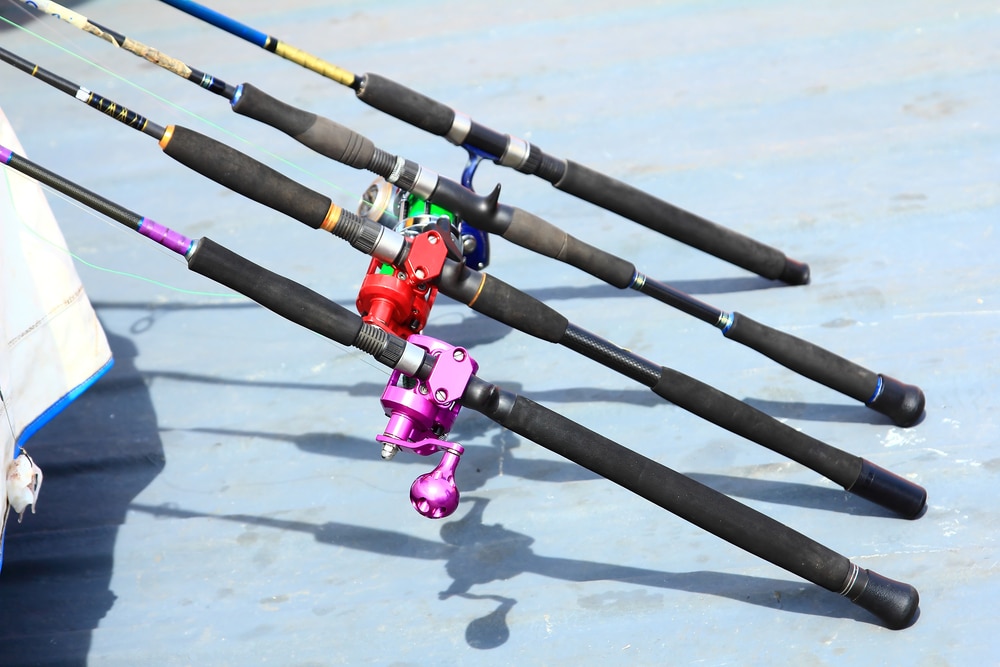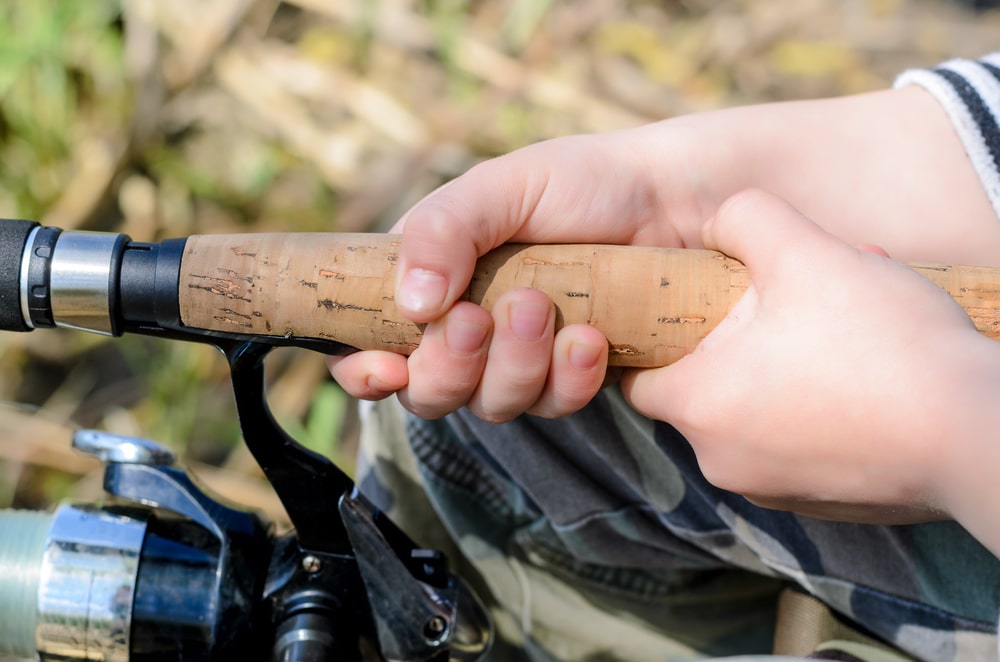Whether casting, retrieving a lure, or fighting a fish, it’s always important to have a good grip on your fishing rod.
To make sure the pole doesn’t slip right out of your hands, fishing rods come with cork or foam grip handles around the bottom of the blank.
Traditionally, these grips consisted of a single piece of foam or cork wrapped around the reel seat.
In recent decades, however, some manufacturers have turned to split grips composed of two pieces of material with a gap in the middle.
These split grip rods have become popular for their weight reduction and sleek appearance.

Contents
Why Do Some Fishing Rods Have Split Grips?
Deciding between a split grip and a full grip is a design choice for rod manufacturers and a personal preference for anglers.
While most larger fishing rods still use a full grip, many smaller, freshwater poles now come in the split grip style.
Consumers quickly took a liking to the new split grip rods, with many appreciating the stylish, modern aesthetic.
Some anglers also found the split grips improved casting performance under any given weather conditions.
Nowadays, split grip rods are just as commonplace as their traditional, full grip counterparts.

What Is a Split Grip Rod?
A split grip rod features a two-piece grip that leaves a bit of space in the middle.
A small piece of foam or cork affixed to the very bottom of the pole constitutes the lower part of the grip.
Above this material, there is a small gap where the blank is left completely exposed. Another piece of foam or cork above this gap serves as the upper portion of the grip.
This upper segment is usually located just above and below the reel seat.
Some split grip rods with a cork handle will also employ a cork reel seat of the same material.
What Are the Advantages of Split Grip Rod Handles?
It’s not for nothing that split grip rods have come to dominate the market.
Not only do they look as great in the garage as they do out on the boat, but they can also bring real performance benefits.
For one thing, a split grip uses less material than a full grip.
All that space that’s left empty on the road represents cork or foam that wasn’t used.
For avid anglers who build their own poles and buy their own materials, a split grip offers an opportunity to save.
The fact that split grip rods use less material also makes them lighter.
While a few inches of cork or foam might not seem like much, every little bit of weight reduction counts.
A lighter rod is generally easier to cast and less of a pain to carry.
This allows you to fish longer without feeling too much strain in your arms.
A split grip can also give a rod additional balance.
Not only is the bottom of the pole thicker than the tip, but it also houses the reel, the reel seat, and the grip.
This means the bottom of a rod will always be heavier than the top. By removing some unnecessary material from the grip, a split grip design will lessen this imbalance.
Split grip rods have the additional advantage of leaving space for hook keepers behind the reel seat.
Fishing is a lot less stressful when you don’t have treble hooks flying around.
Being able to tuck your lures and hooks into a safe spot can help you avoid accidents and restore your peace of mind.
Some fans of split grip rods report other performance-related advantages.
Freshwater anglers often find that the balance and weight reduction provided by the split grip allows them to cast lighter lures into tight spaces.
This improved casting accuracy is bound to result in a larger daily catch.
Split grip rods also make it easier for people to hold the rod with a single hand.
This grip comfort affords a much more comfortable fishing position for many anglers.
What Are the Disadvantages of Split Grip Rod Handles?
While split grip handles are largely beloved in the fishing community, there are a few minor drawbacks.
The exposed stretch of the blank between the two parts of the grip is left vulnerable to damage.
If you leave your poles in a rod holder, especially one where the wood or plastic meets the rod at the unprotected portion of the blank, the rod could receive some scuff marks over time.
In the worst cases, an accident could even cause structural damage to the pole.
While this rarely happens and can be avoided with proper care, it’s something to consider.
Split grips also provide less space for an angler to grab onto.
Some people with active hands or unconventional styles might find themselves reaching for a part of the rod without a grip.
Before purchasing a split grip rod, it might make sense to try holding one.
If your hands naturally grab for the covered portion of the rod, then you shouldn’t have an issue.
Split grips are generally not desirable for larger rods and big-game fishing.
When casting heavy lures and fighting big fish, you’ll need to move your hands up and down the bottom of the rod to ensure you’ve got a firm grip.
Any gaps in the foam or cork material would only get in the way.
Split Grip vs Full Grip Fishing Rod Handles
Ultimately, the decision between a split grip and a full grip handle is a matter of personal choice.
Some anglers love the style and weight reduction that a split grip handle provides.
Others find the weight reduction negligible and prefer the uniform handle and traditional appeal of a full grip.
After you’ve given both types a try, you’ll know which style is right for you.
Conclusion
Split grip handles look snazzy and bring some real performance benefits.
Just to reiterate, since they’re lighter, they’re easier to cast. Also, they offer more space behind the real seat.
If you think they might be for you, there’s no reason not to give one a try.
You might catch more fish, and you’ll look cool doing it.







